With an integrated system in place, operators can monitor the premises to ensure a safe environment for the people and assets. ASMAG.com looks into individual steps and measurements end users need to take into consideration when deploying control room solutions.
With an integrated system in place, operators can monitor the premises to ensure a safe environment for the people and assets. ASMAG.com looks into individual steps and measurements end users need to take into consideration when deploying control room solutions.
A control room serves mainly as a security and safety center that monitors all key elements of physical security in a facility. According to Roger Tsang, General Manager for Hong Kong and Macau at ADT Security Services, it should include, but not limited to, access control, video surveillance, intrusion alarms, visitor management, public address system, fire alarms, building management, power management, IT operation, elevator control and parking lot control.
Different industries may have different requirements for control rooms. Moreover, control rooms can be classified based on coverage, such as a local control room (per site), national, regional and global.
The control room integration market has grown over the last 10 years. "We have 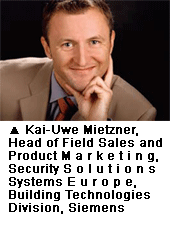 experienced accelerating growth in the last two years," said Karl Seidl, Head of Development for Security Solutions, Building Technologies Division, Siemens. "Different interfaces have been implemented. All sensors such as fire detectors, intrusion alarms and video systems have become more intelligent and more integrated with the command and control system."
experienced accelerating growth in the last two years," said Karl Seidl, Head of Development for Security Solutions, Building Technologies Division, Siemens. "Different interfaces have been implemented. All sensors such as fire detectors, intrusion alarms and video systems have become more intelligent and more integrated with the command and control system."
"The operator just uses the command and control software, not separate systems like telephone, alarm and video. Integration has become more sophisticated to allow for more automatic responses," added Seidl.
Project Cycle
A control room solution must be seen as an overall project, not a stand-alone product. "It is necessary for projects to install the command and control software and to enable interoperability and connectivity, so any additional systems can be added to the platform," said Seidl. Steps taken by system integrators to complete an integration project include needs analysis (system/site survey and user requirements), specifications/configurations, installation and implementation, system testing and training.
Needs Analysis
Site visits and needs analysis are vital before any project.
By adopting the needs analysis phase, system integrators help customers articulate their objectives. Tsang at ADT agreed. "We discuss the existing system design with the end user and consultant before recommending any integrated solution. We then conduct a detailed site survey on all the selected subsystems," said Tsang.
"Once we understand the system design and brand/model of each subsystem, 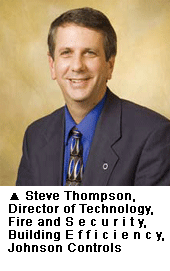 we will confirm the possibility of integrating all the existing hardware and software and suggest upgrade options, before discussing budgetary issues. We will also go through the system requirements with the end user, especially on the level of integration and type of functionality, in order to meet the needs of their operation," said Tsang.
we will confirm the possibility of integrating all the existing hardware and software and suggest upgrade options, before discussing budgetary issues. We will also go through the system requirements with the end user, especially on the level of integration and type of functionality, in order to meet the needs of their operation," said Tsang.
It is important, explained Thompson, to truly understand the customer and identify characteristics such as the industry or market served, type of products, annual sales, key assets, number of employees and visitors at the facility, "because industries have varying degrees of vulnerabilities based on these business attributes."
Integrators must also figure out how exactly security management policy is enforced, and then identify current system components and subsystems. The objective is to understand the existing hardware, administration and monitoring. "We record relevant information such as brands, equipment age, conditions, level of satisfaction and any other useful information specific to the equipment," said Thompson.
Integrators can then discuss areas of customer concerns, including recent incidents and new threats, and identify areas of vulnerabilities/ deficiencies within the facility. Vulnerabilities may include theft of expensive office equipment. Deficiencies of the existing security system, pointed out Thompson, may be employees holding doors open longer than allowed, or outsourcing maintenance of door locks and inspection and testing of door contacts. Other vulnerabilities include vandalism of vehicles in the employee parking lot.
Specs/Configurations
Once needs are carefully analyzed, system integrators can then start configuring 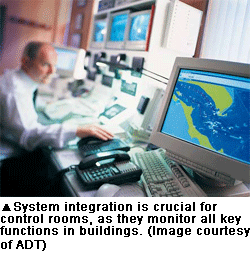 the command and control software. "We have a product called ELS Web, which is our security platform for all integrations. It comes with a special configuration tool for achieving interoperability among subsystems," said Seidl.
the command and control software. "We have a product called ELS Web, which is our security platform for all integrations. It comes with a special configuration tool for achieving interoperability among subsystems," said Seidl.
For example, there are often different alarm site maps for fire safety. "If an alarm goes off, the software must show the exact site and provide an automatic proposal for escape routes," said Kai-Uwe Mietzner, Head of Field Sales and Product Marketing, Security Solutions System Europe, Building Technologies Division, Siemens.
"When thereˇs a fire or security breach, operators need to decide which rescue call to respond to and from what location. Itˇs another example of how we have different configurations," explained Seidl. ¨
It is important for end users to be able to configure systems on their own, because corporate security policy changes, and businesses and cities expand. "Configurations are not as difficult as software programming," said Seidl. "Itˇs just using the user interface to configure the system."
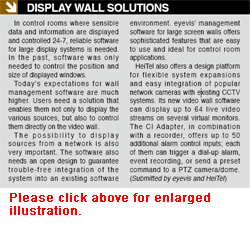
Implementation and Testing
Customers usually select one centralized system as the master control in a control room. Other functional subsystems are then integrated into the master control system for centralized monitoring and controlling. Most control rooms use IP-based systems.
The master control system works 24-7. All the data running on the system are 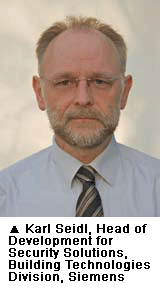 digital, allowing for greater expansions. For an existing system to be upgraded to a fully integrated system, the key criterion is connectivity among different systems. "We can connect different systems with hard wire (low level) or TCP/IP (high level). Communication protocol is also key to successful integration of systems. Sometimes, hardware upgrades are required for integration with the existing system, and third-party software may also be required to bridge the gap between the two systems required for the integration," said Tsang.
digital, allowing for greater expansions. For an existing system to be upgraded to a fully integrated system, the key criterion is connectivity among different systems. "We can connect different systems with hard wire (low level) or TCP/IP (high level). Communication protocol is also key to successful integration of systems. Sometimes, hardware upgrades are required for integration with the existing system, and third-party software may also be required to bridge the gap between the two systems required for the integration," said Tsang.
Siemens uses connectors, a type of software interface that allows system integrators to combine the existing external system with their security platform. "This is called SOAP, a protocol for exchanging XML-based messages over computer networks, normally using HTTP/HTTPS," explained Seidl. "Itˇs a control interface to connect all subsystems, sensors and external databases together. Itˇs an open interface. The implementation of the IT part is done by the integrator setting up the database and hardware networking."
Then, the configuration and the policies need to be completely tested before going live. "At the implementation stage, we will work with the system vendor on the on-site test schedule and obtain technical information from different vendors. The testing on the integration with different system will begin and the integration plan and schedule will be in place. On-site testing with alarm and event management functionality will be conducted. Next the drawings, schematic diagram and operational guidelines will be submitted. Once the system is installed, we will do testing and commission." said Tsang.
Finally, operational training and technical training for the customer administrator will be conducted and the SIs handover the integrated system to the end user. "Once the system is fully configured, end users/operators can be trained," said Seidl.
Integration Challenges
According to Thompson, integration challenges include determining the primary 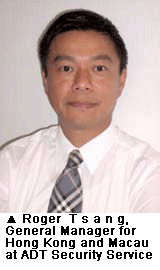 objective for the control room; determining the macro architecture; meeting the needs for high availability/uptime in power, air conditioning, and voice/data communications; managing functions across organizational boundaries; and dealing with legacy systems and proprietary protocols when to integrate and when to replace.
objective for the control room; determining the macro architecture; meeting the needs for high availability/uptime in power, air conditioning, and voice/data communications; managing functions across organizational boundaries; and dealing with legacy systems and proprietary protocols when to integrate and when to replace.
A thorough needs analysis is pivotal in solving these challenges. "Each of these issues can be solved by engaging the customer in the trade-off discussions. This is the purpose of a needs analysis," stressed Thompson.
Another challenge in control room projects is to bring all the parts, both human resources and hardware components, to work together in harmony and not create gaps, said Seidl. "Itˇs a complex system, with multiple parties involved. Since many subsystems and components have to be integrated, the challenge is to bring product knowledge to the administrator," pointed out Seidl.